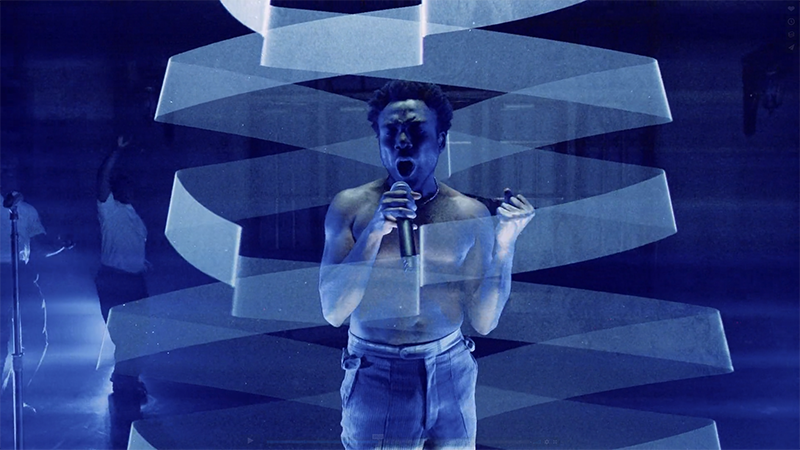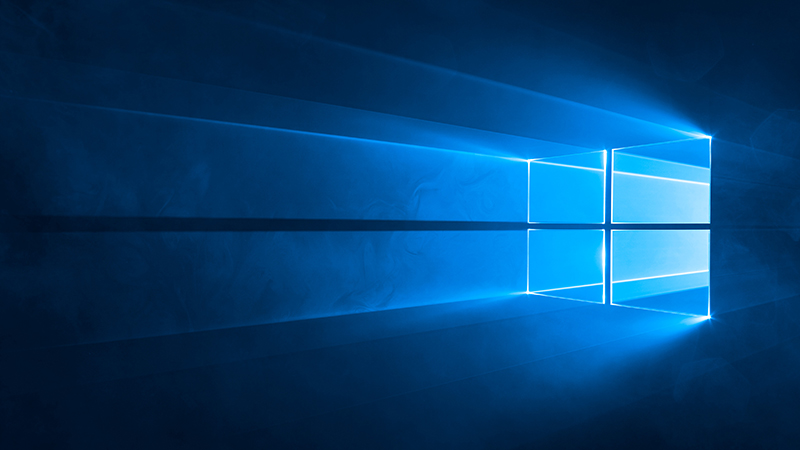
The Founder of Future Weapons Declares War on Ho-Hum Visual Effects
The creations of visual artist Adam LaBay are getting a lot of exposure as of late. Through his company, Future Weapons, LaBay’s art is featured on a veritable Trifecta of media platforms; live concerts, television and digital. In fact, he is in such demand these days; the only time available to respond to PLSN was during his transatlantic flights. The following captures just a bit of where he came from, current projects and where he envisions Future Weapons is headed.

PLSN: Let’s start at the beginning, when you first realized your interest in laser design and live events.
I’ve been obsessed with music from a young age. I grew up in Escanaba, MI (on Michigan’s remote Upper Peninsula), which is pretty much the middle of nowhere — there’s nowhere to go, nothing to do, it’s incredibly boring if you’re not into hunting, fishing or driving your truck on the ice. My escape was always music, and I spent my teenage years obsessing over bands and searching for new underground music. We would take road trips to Wisconsin and see punk shows in basements and barns. This was in the 90’so it wasn’t exactly easy to actually find good underground music before the Internet existed, although I do miss the days of trading metal tapes in Denny’s parking lot.
After I finished high school I moved to bigger cities in California and was able to see bigger shows in real venues. During that time, I taught myself to play bass and became a musician.
Toward the end of my music career, I was trying to figure out a way to make the band I was in better. I came up with the idea to create a light show. I sold some of my music gear, bought a bunch of lights and created my own DIY lighting rig that I could control by flashing power on and off using Christmas tree footswitches from Walgreens. Soon, bands, venues and artists would hire me to bring my lighting rig (but not my band) to their events. I got so into this, I decided to stop splitting my time between music and lighting and sold all my music gear, invested everything into lighting and lasers and launched my company Future Weapons. Note that I eventually figured out that there are better ways to control all this stuff than using Christmas tree footswitches.

When was your company, Future Weapons, founded?
Future Weapons (futureweaponslighting.com) has always been an extension of me and what I do. The name happened early on; I incorporated and made it a company later. I didn’t want a name that would attract normal or boring gigs, so I came up with something that would keep all the birthday party clients from ever trying to hire me. It’s intentionally a bit dangerous sounding, kind of like the music that inspired me to get into this in the first place. I didn’t want a company name with the word “laser” in it. That seems kind of like an artist calling their project “Music Band” — people should know what you do because you do cool stuff.
How did those early years around the punk scene help you?
I come from a background of underground music where everything is DIY. You want to do something, you figure out how to do it yourself. In the early days, I would buy gear that I had no idea how to use and just figure it out, sometimes live on stage. I definitely made some mistakes, but it’s important to break things and figure out what doesn’t work to understand what does work. It’s important to experiment endlessly and do whatever crazy idea you come up with, especially if you don’t exactly understand the implications of what you’re doing. Keep yourself on the edge of your comfort zone and try to find ways to be innovative, and you’ll never be bored.
Was there any pivotal moment when you felt you were on the right path? When did you sense you were achieving what you were after?
I started this company with limited funding, so I’ve had to work hard to acquire every piece of equipment in my inventory. The first time I realized I was getting somewhere was the day I received my first order of KVANT Spectrum 20’s. It’s kind of crazy to buy and own a laser that costs more than your car!
Were lasers always at the forefront of your design decisions?
I absolutely love lasers, but I’m interested in all things visual. I do laser design, lighting design and run video playback for film projects in Los Angeles. I don’t really see a difference between all the visual tools available, they are all interesting and useful and should work together as a unified visual package. I like integrating everything into a MA2 lighting console and controlling everything myself from a single control surface.

What benchmarks or notable gigs contributed to your exposure, growth, and knowledge about where you wanted to take your career?
The Window 10 project was a breakthrough project for me. I was introduced to Bradley G. Munkowitz (a.k.a. GMUNK) and Joe Picard through our mutual friend Bryant Place. GMUNK is one of the most visionary and creative people I’ve had the pleasure to work with and I’m always excited when I get a call because I know it’s going to be something crazy and challenging.
GMUNK had this idea to create the Windows 10 desktop image out of lasers, and I was tasked with providing the lasers and programming to make this happen. It was a fast-paced sleepless laser sculpting experience, and we came up with some epic content for the new Windows 10 logo. It was a big moment when my Windows 10 work station updated, and I saw my lasers appear on the desktop several months later. This project ended up creating a lot of visibility for what I do — it’s been installed on hundreds of millions of computers and has been seen by billions of people worldwide, making it the most popular laser image of all time. I really feel like we nailed it.
Another notable project was providing lasers for Childish Gambino’s performance of “This is America” on Saturday Night Live back a couple months back. I teamed up with my favorite director of photography, Joe Picard, and we introduced them to a technique we call “laserbanding.” This technique tricks a camera into only seeing part of the light emitted, creating reality defying floating beams of lasers in real time. This was the first time this had ever been seen on live national TV so my email, social media and phone blew up for a few weeks. We recently introduced the technique to a live festival audience for the first time with Childish Gambino at Lovebox [Music Festival] in London.
Please discuss any other successful collaborations.
I collaborate regularly with Taran Allen, who is a good friend and my favorite live show designer. We’ve done tours for A$AP Rocky, Future, and Boys Noize together. For Boys Noize, Taran designed this heavy industrial post-apocalyptic DJ booth and stage built out of pipes, cargo netting, and military fencing. I engineered, fabricated and built the entire thing, and it successfully toured the world. One of my favorite aspects of the project was, I figured out a way to reverse engineer the control protocol used by police and hazard lighting and made them DMX-controllable with a lighting console.
I also collaborate frequently with Anthony Garcia of Nice Lasers. I was the Audience Scanning Laser Safety Officer for Laserface for Gareth Emery, a show with 120 high powered laser projectors at Bill Graham Civic Center in San Francisco (See PLSN, June 2018, page 47). Anthony is an incredible live laser show programmer with a unique approach and I love working with him.
Future Weapons is located in L.A., right?
Future Weapons has two Los Angeles locations. I have a home office where I run the company’s operations with my fiancé Parker Day, and do programming, design and visualization. I also have a warehouse for testing live concepts and storing equipment. We are a small company with a tight fulltime crew, supported by a big network of specialists who we bring in for the different projects we work on.
Tell us about your Laser Safety Officer credentials.
It’s tricky to become a live laser show designer and operator in the USA — a person needs a variance from Center for Devices and Radiological Health (CDRH) division of the FDA in order to project high powered Class IV laser over audiences. I’ve taken this a step further and have an audience scanning variance which allows me to project lasers into the crowd safely and legally. This wasn’t possible in the USA until Pangolin developed the PASS system, which is hardware that’s installed in a laser that is used to ensure audience safety. I’m one of a handful of people who have a variance that allows this. I’ve taken Laser Safety Officer training at Kentek and received LSO Certification from the International Laser Display Association (ILDA).
Do you use KVANT lasers exclusively?
I work exclusively with Pangolin Beyond as my control system and KVANT lasers on all of my projects. You can’t beat KVANT quality, their equipment is extremely durable and the quality of their laser beams is perfect. When you mentally picture a laser show, that abstract image of what a laser is supposed to look like is what KVANT lasers look like.
What are some current projects?
One of my favorite current projects is some new technology we’re developing for an artist named Sophie MSMSMSM. For Sophie we’ve developed an approach to using Pangolin Beyond that transforms the software into a real time live laser synthesizer. Her laser shows are no longer pre-programmed, all laser effects are generated by the music she creates live. If she drops in a new synthesizer patch or changes a rhythm pattern, the lasers react instantly. It’s a new way of running lasers that hasn’t been attempted before this project. It goes far beyond being “sound reactive” but I don’t want to go into too many details until after it’s officially released.
What are some of your long range plans for Future Weapons?
My long-range plans for Future Weapons are simple — I want to keep creating new and exciting things and buy as many KVANT lasers as humanly possible. I won’t be happy until I have hundreds of high powered lasers that I can use on my projects. I tend to approach this company one project at a time and just keep building.


